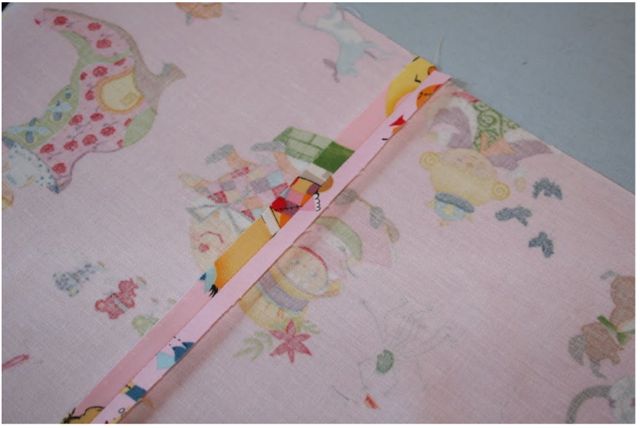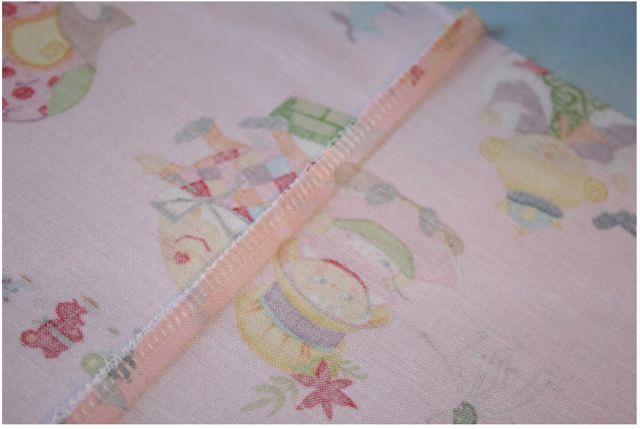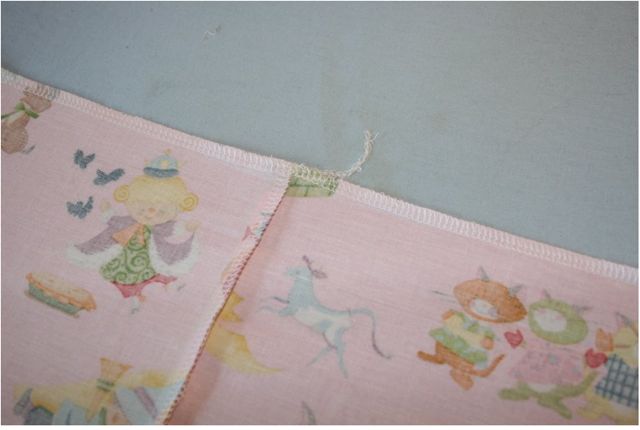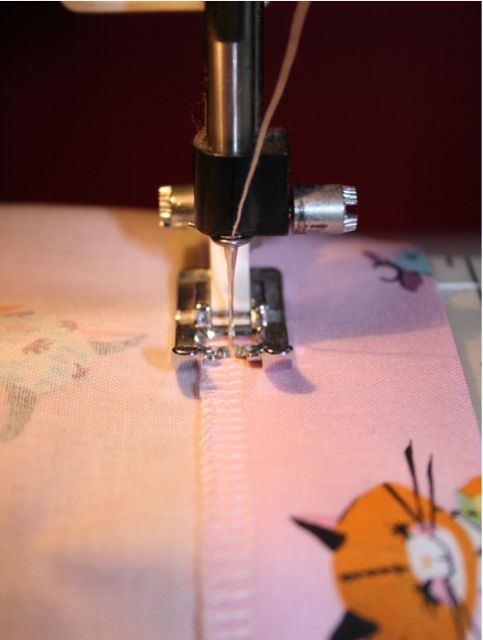20-minute skirt tutorial
 |
| 20-minute skirt tutorial |
How to make pattern skirt girls - My girls wear a lot of skirts. They’re easy to put on, comfortable to play in, and a great way to use up and show off small amounts of fabric that I really, really love. Add an inexpensive t-shirt from Target, and you’ve got outfits all week long. You probably even have all the supplies on hand:
1/2-1 yd of quilt-weight cotton fabric
1 yd 3/4″ elastic (I like the knit non-roll elastic)
matching thread
Not only is this skirt super quick to put together, but it only requires less than a yard of fabric, making it a fantastic stash-buster. And since the measurements are fairly loose, it can be a fantastic gift item for all those birthdays and holidays. Nearly a perfect project, for any skill level! BONUS: As we go along, I’ve included additional instructions for those of you who’ll be using a serger, or who’ve just gotten one and are wondering when and where to serge. Yippee!

Lay out a half yard of fabric. Prewashing is always strongly encouraged. Trim the length of the fabric based on the height of your child. Our girl is pretty average in height for a 3-year-old, so I cut this to 15″–the length I wanted the finished skirt to be (13″, long enough to end right at her kneecap) plus 1″ for the waistband and 1″ for the hem. (You can find a great guide to skirt lengths here–but do keep in mind the lengths on these charts don’t include hem and waistband allowances, so add 2″-3″ to account for those.)
For sizes over 4T, I will suggest using two “panels” of fabric to give you more fullness in the skirt. To use a second panel, cut your fabric to length, then cut another piece of fabric the same size. Follow the instructions below for sewing, but make TWO seams–one on each side, connecting the two panels to one another–rather than a single seam at the back. Using this adjustment, you can make skirts all the way up to girls’ size 12!

Remove your selvedges! Selvedges shrink at a different rate than the rest of your fabric, so even if you’ve prewashed, it’s always wisest to either remove the selvedges or cut around them.

Fold fabric right sides together, matching raw edges along the former selvedges. Stitch a seam using your presser foot as a seam guide, giving you approximately a 1/4″ seam allowance.

Press your seam allowances open. You now have a tube of fabric with a single seam.

(If you’re using a serger, rather than pressing your seam allowances open, serge the seam and press the serged seam allowance to one side.)

To create the casing for the waistband elastic, first fold over the upper edge about 1/4″ (but remember that the measurement is pretty flexible–just fold over a little bit, OK?). Press that in place at the iron.

Then fold over again, making a casing the same size as the elastic you’ll use. In this example, I’m using 3/4″ elastic, so I folded over a teensy bit more than 3/4″ to give myself some wiggle room.

Stitch very close to the folded edge to create the casing, but leave an opening where the elastic will be inserted (skip past all the serger instructions for an image of that–it’s three or four pictures down).

(If you’re using a serger, you can skip all the folding and pressing. Just serge all the way around the upper edge of the tube, running back over the first stitches at the end and chaining off.)

(With a serged edge, fold over to a depth equal to the width of your elastic, plus a little–here, I’ve folded over an inch.)

(Stitch your casing down right on top of those serged stitches.)

When you get almost back to where you started stitching that casing down, leave an opening where you’ll insert your elastic–it doesn’t need to be huge, just about 1.5 fingers wide. Be sure to backtack on either end of this opening–you’ll want it strong enough to withstand putting elastic in later.

At this point, I go ahead and stitch the hem. I think it’s a ton easier to do it here than to do it after the elastic has been installed and the skirt is all gathered up. Create the hem almost identically to the casing for the waistband: start by folding over 1/4″ on the lower edge of the tube you’ve created, opposite the casing you’ve made for the elastic.

Then fold another 3/4″ to create a 1″ hem. Press in place, nice and crisp. (Now, I should point out that you can totally create the hem on the serger the exact same way you did the waistband: serge the edge, then stitch over the serged stitches on your machine. But I think the folded-and-stitched edge on the inside of the hem looks nicer, don’t you? Choose the one you prefer, and go with that.) Because this skirt is technically a dirndl–a large rectangle of fabric that has been gathered to a waistband–there are no curves at the lower edge, which makes it easy to form a hem as deep as you’d like. If you want to build in some growing room, simply add more length when cutting, and then fold up 2″-3″ for a deeper hem that can be let out later.

Stitch super close to the folded edge.

When you get back to where you started, stitch right back over where you began and backtack. Your hem is done! Easy, huh?

OK, now we put in the waistband elastic. First, cut a length of elastic the same measurement as your child’s waistline. This gives you an extra inch for overlap when we stitch it closed, plus just the right amount of stretch (without squeezing little tummies). Again, this chart gives you some great measurements for when you don’t have a convenient child near-by to measure.

Find the biggest safety pin you have. Most times, I use a diaper pin, but today I found a giant gold-toned one in the pin cushion–no idea where that came from, but gift horses, right?

Place the safety pin into the opening you left when you stitched the casing.

Pull the pin through, and the elastic will follow behind.

Push the safety pin along, allowing the casing fabric to bunch up as you go. (Note to self: get a manicure!)

Once you’ve got a big ol’ bubble of fabric bunched up behind the pin, pull it on out, holding the pin in place by pinching it through the fabric. Keep going all the way around the casing–your goal is to bring the pin out the other side, and drag the elastic with it.

Try this little trick: to prevent the other end of the elastic from being sucked into the casing, as well, use a second (smaller) safety pin to anchor it to the seam on the outside of the casing.

Eventually, your safety pin will come out the other side of the opening in the casing. Jubilee!

Pull out enough elastic on either end to work with it. Overlap the two ends by about 1″ and pinch them together.

Stitch the two ends together forward and backward, about 3-4 times to get a good anchor going. You’ll want it strong!

Once the two ends are secure, you’ll have a loop of elastic outside the opening in the casing.

Pull the loop to the inside of the casing.

Stitch the opening closed, just that one little bit. Trim all your threads, both here and at the hem.

I like to add one final step: I stitch through the elastic at the side seams to prevent it from shifting and rolling over. I really, really hate it when the elastic gets all twisted inside the casing, mostly because it’s super uncomfortable. In this skirt, with its one seam, I make that one seam a side seam, and stitch forward and backward through the elastic there, 3-4 times, just like when I joined the elastic ends. I do the same thing at the other side, directly across from the seam, after I’ve stretched the skirt out and evenly distributed the volume of the gathers. Perfect, no-shifting waistband!

And this, 20 minutes later, is the finished product.

A sweet, simple skirt that is totally adaptable and embellishable (if that’s a word). Imagine it with pockets, or rick rack, or a contrast hem! So easy, so quick. Now, before you get all, “Sure, 20 minutes for you, but not for me!” I’ll grant it might not take 20 minutes the first time. But so many things in sewing are like a parabola: they get closer and closer to zero each time you do them (but never reach it). So maybe the very first time you do this it takes an hour. But the next time? It’ll take half that. And the next time, you’ll shave off a few more minutes, and on and on. It’ll never happen instantly, but the more you do it, the more quickly you’ll get it done. I believe in you!

Now get on out there, and do some dancing!

With the information we provide about How to make pattern skirt girls
, We hope you can be helped and hopefully set a precedent with you . Or also you can
see our other references are also others which are not less good about FUN SEWING | Every Day In Kebaya
, So and we thank you for visiting.
open tutorial sew : http://whip-stitch.com/20-minute-skirt-tutorial/

0 komentar:
Post a Comment